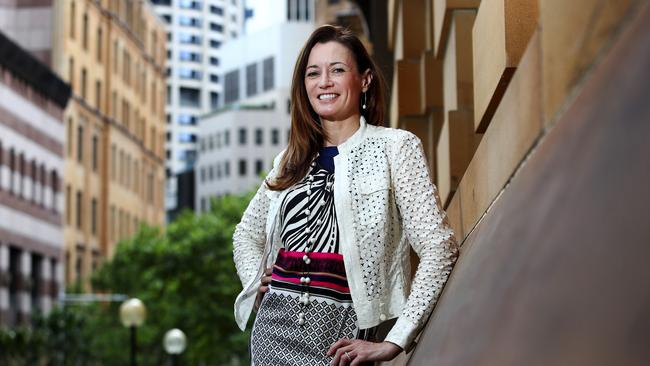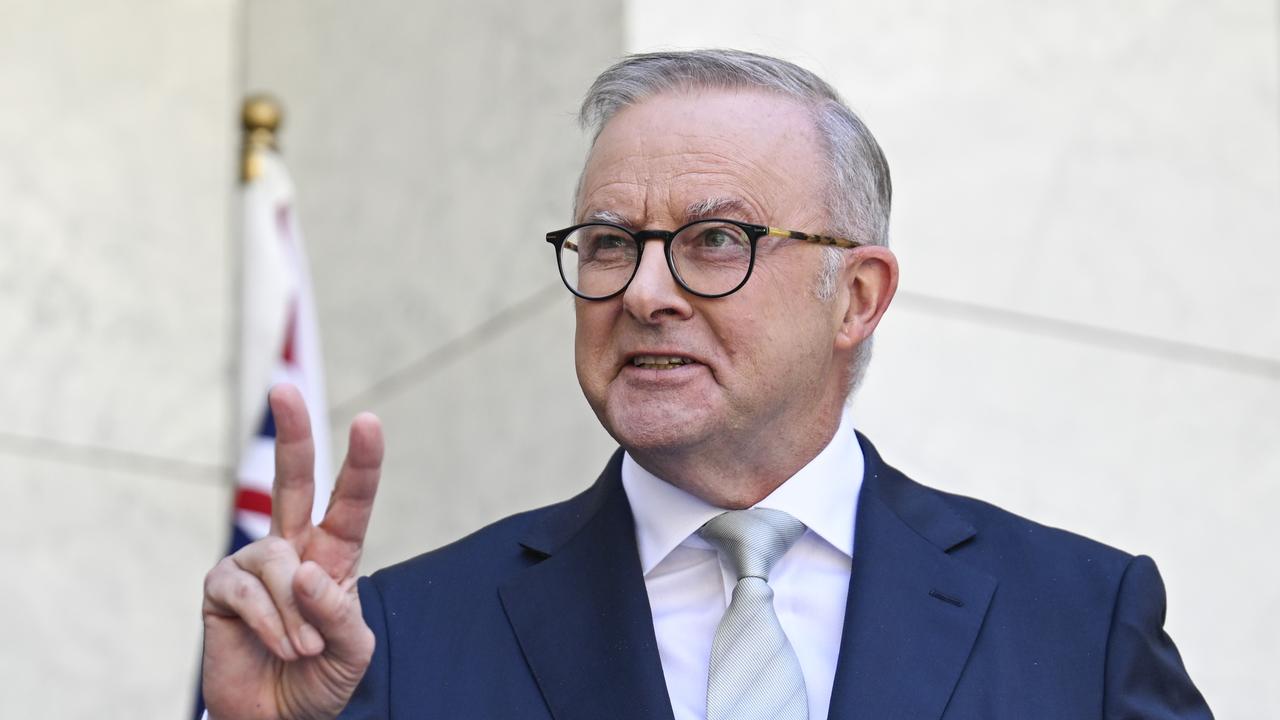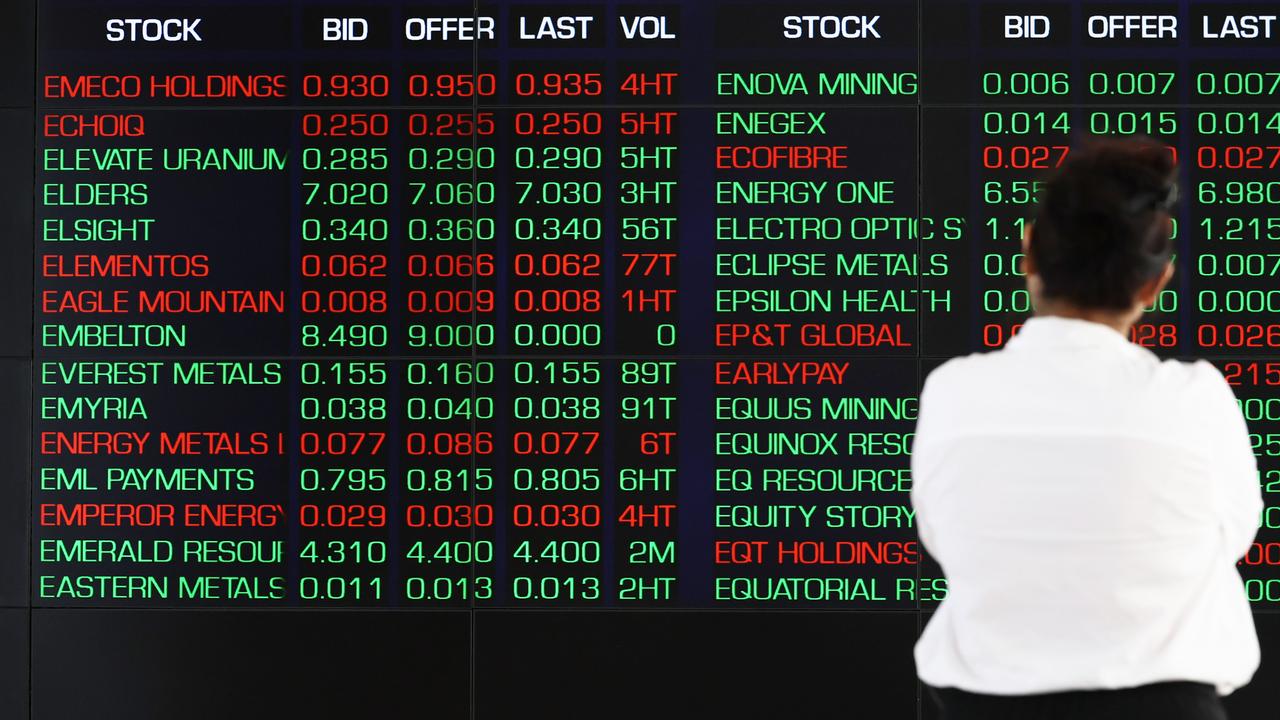Meet Blythe Masters: trailblazer shaking up exchanges
Blythe Masters is “thrilled” the ASX has decided to proceed with the blockchain technology developed by her firm.

It was only a few years ago that Oxford-born Blythe Masters was described as one of the most powerful women on Wall Street, as head of global commodities for New York investment bank JPMorgan.
Masters’ 27-year career on Wall Street’s bluest of blue-blood firms included becoming a managing director at the age of 28.
Yesterday, her brilliant career took another big leap forward when the distributed ledger technology developed by her latest venture, Digital Asset Holdings, was chosen by the ASX to replace its CHESS sharemarket clearing and settlement system.
The ASX is now the first stock exchange in the world and the first major financial institution to commit to using blockchain-based technology — specifically Masters’ Digital Asset technology — for a large part of its back-of-house operations.
On her 13th trip to Sydney over the past two years, Masters said yesterday that she was “thrilled” with the fact that the ASX had taken the time to review Digital Asset’s technology and was now “comfortable with the outcome and had decided to proceed”.
“After several years of growing interest and hype around this space, the announcement represents the first formal validation that the technology can work and that it can work in the context of the most stringent requirements that are needed for its deployment in the context of a market infrastructure like the ASX,” she said in an interview with The Australian.
“Based on our knowledge of how things were progressing, we were optimistic that this would be the outcome. But it was never a foregone conclusion.”
Masters began talking with the ASX about working with Digital Asset to help replace its CHESS system soon after taking over as its chief executive in March 2015.
The ASX decision represents a huge validation for Digital Asset, taking it from the start-up it was only a few years ago into one of the leading players in the application of blockchain technology in the high-level financial sector.
The company has 15 strategic investors including the ASX, which directly owns about 8 per cent of the company.
Digital Asset’s shareholder register includes some of the world’s leading financial players, including Goldman Sachs, JPMorgan, Citi, ABN Amro, IBM, Accenture, Spain’s Santander and Deutsche Borse.
Masters left JPMorgan in 2014 after a 27-year career. She was a managing director at the investment house at the age of 28 and rose to become a member of its executive committee with roles including head of global commodities, chief financial officer of the investment bank and head of the global credit portfolio. She was also a high-profile executive working on JPMorgan’s credit default swaps.
When JPMorgan sold its commodities business, she was recruited to head up Digital Asset by Sunil Hirani, the entrepreneur who founded credit default swap brokerage Creditex Group.
Masters quickly grasped the potential of the blockchain based distributed ledger technology, which she sometimes describes as being like “email for money”.
“I had a good appreciation for the challenges and needs of the industry,” she said.
“When I came to understand the potential of the technology, it was pretty clear to me that this was an idea of sufficient magnitude to be very unusual and potentially game changing.
“I could see there would be benefits in terms of efficiency, cost saving, and the opportunity to build new value, add customer services and eliminate a significant amount of risk.”
In an interview with Bloomberg Markets magazine in September 2015, Masters explained the attraction of the technology.
“You have the front-end systems trading at warp speed, and nanoseconds of competitive advantage are being extracted, and yet the back end of Wall Street hasn’t been fundamentally overhauled in decades,” she said.
Masters admits that the blockchain technology has come a long way in the short time that she has been involved in it.
When it was first mooted, there was a wariness because it was based on the same technology that allowed the development of cyber-currency bitcoin. “The best way to describe the technology we are now talking about — distributed ledger technology — is ‘blockchain inspired’,” she said yesterday.
“The original bitcoin blockchain invention triggered the innovations which have led to the technology we are using now.
“But it has been materially adapted to be better suited to the needs of a highly regulated, highly sensitive market infrastructure (like the ASX).
“We are talking about a positioned network rather than a purely open one or a public one.
“We are talking about traceabilities that are able to operate at a much higher throughput capacity and which have other features including transparency to regulators.
“There is no anonymous interaction and there are many other changes from the original public bitcoin blockchain design, which was appropriate for its use but is not appropriate for highly regulated financial service activities.”
Masters has spent much time talking with market regulators including ASIC and other ASX stakeholders. Digital Asset now has a team of about 20 people working in its Sydney office, with plans to expand it following the ASX decision yesterday.
The company is also working with several other major clients in Australia, including some of the big four banks. “We have been growing our presence here for the past two years and we would expect to grow it further from here,” Masters said.
Masters also points out that Digital Asset had made some decisions in the development of its distributed ledger technology which may be different to others.
“We typically segregate data that services contractual information rather than sharing it by encrypting it,” she said.
She argues that this eliminates the possibility of someone developing an algorithm which could seek to de-encrypt the information. “The devil is in the detail of the design,” she said.
“With our solutions we are extremely careful not to make any design choices that introduce new risks. We will not be sharing all the data belonging to participants in the distributed ledger with all the other participants.”
Masters says some of the exchanges and other financial institutions working with Digital Asset “are encouraged by the fact that a leader in this space has made a decision of this significance”.
“Many others have been conducting their own exploration, their own proof of concept, but the fact that a notable organisation like the ASX has made a decision to proceed is obviously encouraging others.”
For Masters and Digital Asset, the ASX announcement yesterday was just the beginning.



